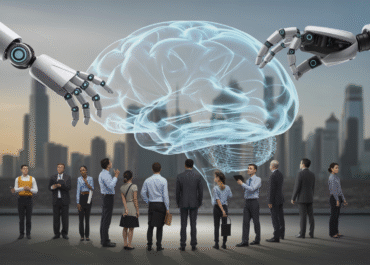Microsoft Build 2025: Ushering in the Era of AI Agents and the Open Agentic Network
Microsoft Build 2025 unveiled a groundbreaking vision for the future of artificial intelligence, spotlighting the advent of AI agents and the ambitious project of building an open agentic network. This shift represents a fundamental evolution in how we interact with technology, moving beyond simple tools to intelligent entities capable of acting on our behalf, collaborating with other services, and truly understanding intent.
The Dawn of the AI Agent Era
At the core of Microsoft’s announcement is the concept of AI agents as the new development model. Unlike previous iterations of AI that primarily responded to direct commands, these agents are designed to be proactive, context-aware, and capable of completing complex tasks autonomously. Microsoft Copilot, already a daily companion for millions, stands as a prime example of this evolution. Copilot is envisioned not just as an assistant, but as the first step towards a future where intelligent agents seamlessly integrate into every facet of our digital lives, from managing schedules to drafting intricate reports.
These sophisticated agents are empowered to go beyond simple queries, interpreting user goals and executing multi-step processes. They can interact with applications, external services, and even other agents, creating a dynamic ecosystem of intelligent automation. This represents a significant leap forward in productivity and personal efficiency, promising to free up human capacity for more creative and strategic endeavors.
Building the Open Agentic Network
A key pillar of Microsoft’s strategy is the commitment to an open agentic network. Recognizing that the true power of AI agents lies in their ability to interconnect and collaborate, Microsoft is working closely with partners like OpenAI to establish open standards and protocols. This collaborative approach ensures interoperability, allowing agents developed by different entities to communicate and work together seamlessly, fostering a truly democratic and expansive AI landscape.
For developers, Microsoft Build 2025 introduced a suite of new tools and platforms designed to facilitate the creation, deployment, and management of these advanced agents. These tools empower developers to build agents that can tap into a vast array of services and data, unlocking unprecedented possibilities for innovation across industries. The vision is clear: to democratize AI capabilities, making it easier for anyone to harness the power of intelligent agents and contribute to this evolving network.
Microsoft’s Vision for a Responsible AI Future
As Satya Nadella, Chairman and CEO of Microsoft, emphasized, «AI is the defining technology of our time.» Microsoft’s commitment extends beyond technological innovation to include the crucial principles of trust, security, and responsible AI. Building an open agentic network requires robust safeguards to ensure data privacy, prevent misuse, and maintain ethical boundaries. The company is investing heavily in frameworks and guidelines to ensure that AI agents operate transparently, fairly, and securely, benefiting society as a whole.
This forward-looking approach positions AI agents not just as technical marvels, but as responsible digital partners that enhance human capabilities and contribute positively to global challenges. The open agentic network is not just about connectivity; it’s about building a foundation for a future where AI is a ubiquitous, benevolent, and empowering force.
The announcements at Microsoft Build 2025 mark a significant inflection point in the journey of AI. By championing AI agents and an open, interconnected agentic network, Microsoft is paving the way for a more intelligent, collaborative, and human-centric technological future. The era of proactive, intelligent agents has begun, promising to redefine our digital landscape in profound ways.


